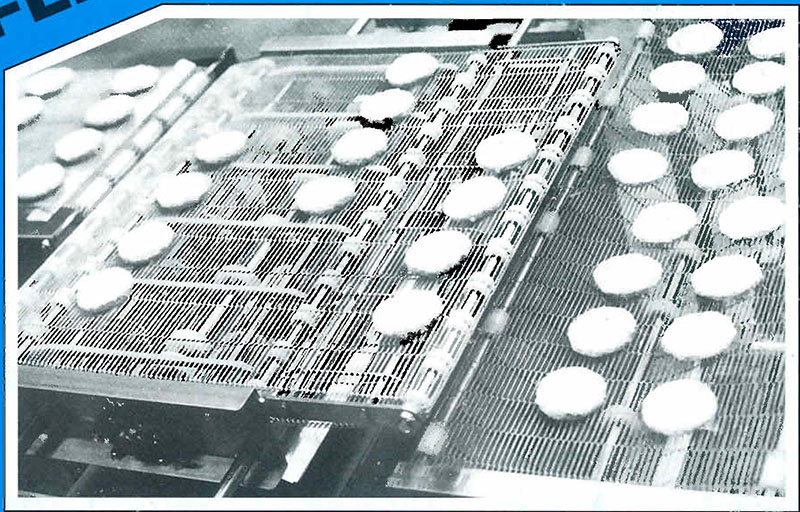| Pitch x Wire Diameter | 1/2 x 0.092 in |
|---|---|
| Actual Pitch | 0.500 in |
| Actual Opening Between Wires | 0.408 in |
| No. of Wires Per LN.FT. | 24 |
| Open Area1 | 81.2 % |
| Maximum Loading2 | 10.0 lbs/ft² |
| Support Rail Spacing3 | 4″ Centers across width |
| Belt Speed4 | up to 75 fpm |
| Maximum Allowable Tension5 | 30 lbs. per Z-Bend |
| Sprocket Diameters6 | 1.62 in 2.00 in 3.00 in 4.25 in |
| Grooved Transfer Rollers | 1 1/4 in |
| Ungrooved Transfer Rollers | 3/4 in |
| Minimum Diameter Reverse Bend7 | 2 1/4 in |
- Approximate open area excluding the edges.
- The product weights are based on normal running conditions. Temperature, speed, and belt support will effect the allowable load.
- Maximum loading decreases when utilizing 6″ center support rails.
- Under good conditions, speeds up to 120 feet per minute may be used, but to achieve maximum belt life, it is recommended to use the following normal speeds.
- The table shows the Maximum Allowable Tension per Z-Bend joint at the drive roll. The amount of Z-Bends is calculated by taking the number of spaces across the width plus 1.
- Other considerations, when selecting the right belt specification, are the sprocket diameter, minimum transfer roll size, and the correct reverse bend diameter.
- When Flexx Flow Belts are used in applications with elevated temperatures, or for conveyor lengths in excess of 40 feet, a take up roll is recommended to compensate for stretch and expansion. In order to take up this slack, the belt must take a reverse bend. A reverse bend must be larger in radius than the normal way the belt would flex and varies depending on belt specification.


